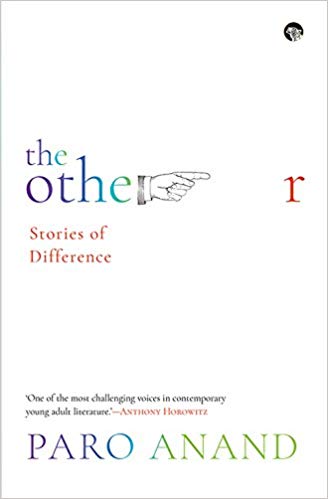For the longest time there has been an invisible line, an unwritten rule that prevents writing meant for young readers from straying too far into the unknown and by extension, the ‘unsuitable’. The Other: Stories of Difference by Paro Anand is a collection of short narratives that aims to bring to light the experiences of those who lurk at our society’s margins. Anand dares to take her young adult readers down a dark path to the far reaches of society, which in reality aren’t that far from the realities of everyday adolescent life.
Most of the stories are set in contemporary urban, unnervingly familiar settings which help to better situate the plot. This also helps the reader to identify more easily with the stories, as they unfold within the confines of an intimate friendship, a busy school ground, a cozy living room or a loving family. However, identifying with Anand’s characters and their situations brings forth an uncomfortable feeling on the part of the reader. As the cover typography emphasizes, Anand not only aims the spotlight at subaltern voices, but also points a finger at those who for so long have suppressed or ignored these stories.
Each story takes on a stylistic life of its own as it narrates the experiences of its protagonist. Anand attempts an almost parodic take on the popular fairy tale in her story ‘So, Cinderella’. Set in the modern day it tackles head-on issues like body shaming and the struggles of the differently abled. Like several of the other stories in the book, this particular tale is told from a unique vantage point, that of one of the infamous ‘Ugly Sisters’. In her righteous tirade, this previously ignored sister brings to light the pain that labels related to physical appearance cause those who are made to bear them. Anand is bold enough to have her characters flout political correctness to lay bare the reality of society’s standards of beauty. But Paro Anand does not present a one-sided rant that would nullify the book’s premise. The favoured one, Cin, also experiences a sense of otherness which is not left unexplored.

